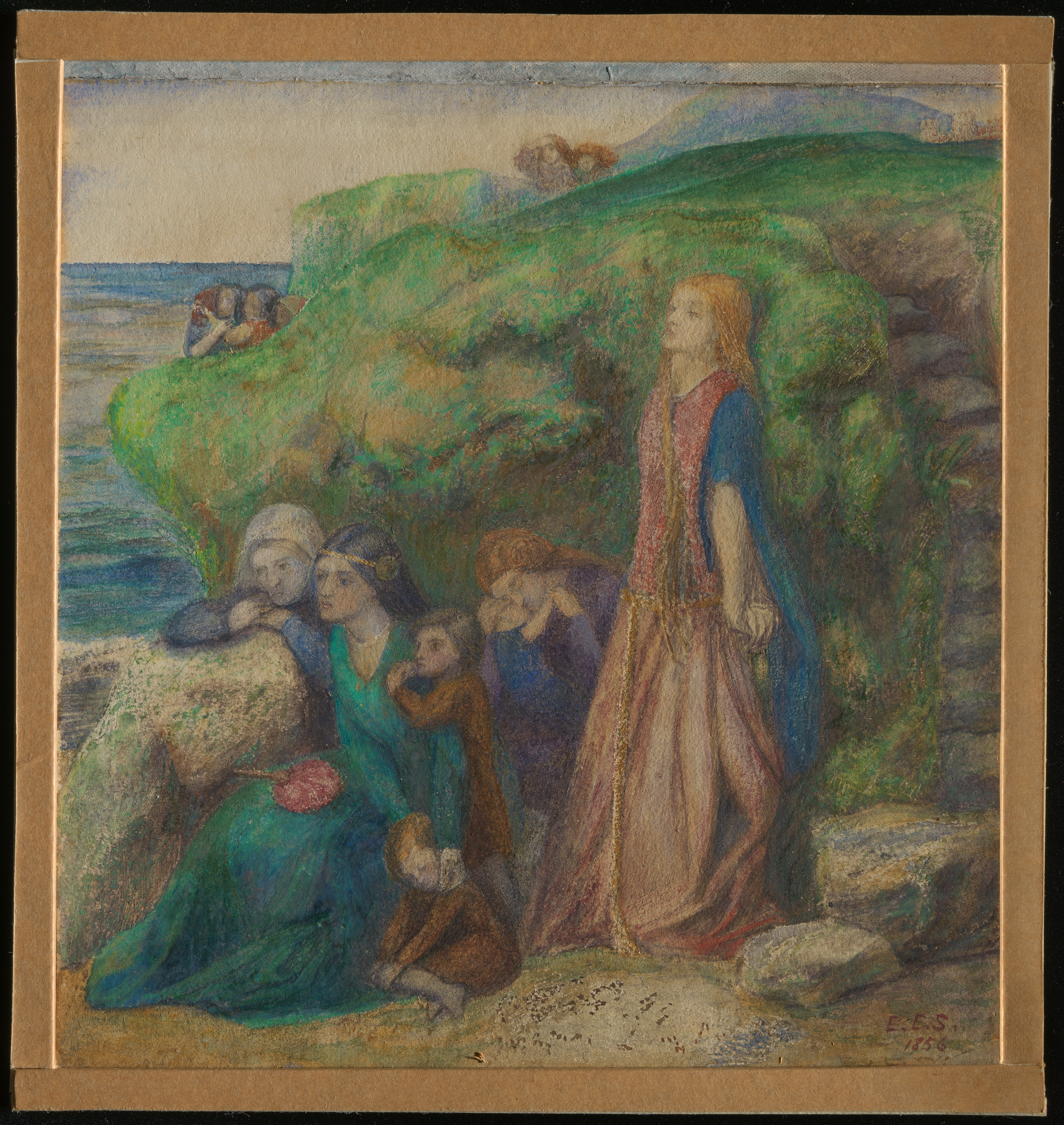
Watercolours by Elizabeth Eleanor Siddal
Colour Materiality
1856
Dante Gabriel Rossetti shared his studio with Elizabeth Eleanor Siddal, a talented artist supported both morally and financially by the critic John Ruskin. When she first worked with Rossetti, she was a less experienced artist by several years, first perfecting her excellent drawing and design skills before working in colour. She was also his model. They married in 1860 and she would die in 1862, shortly after the birth of their stillborn child. It is clear that each inspired the other. Edward Coley Burne-Jones and George Price Boyce shared the studio too, both working more on paper and at smaller scale than they would in later life, all sharing mediaeval subjects. Materials analysis by the author has shown that all of these artists have coloured pigments in common, across all media. The materials were probably provided by the more successful Rossetti, who maintained an account with the artists’ colourman Roberson.
Sir Patrick Spens is signed and dated ‘E.E.S. 1856’. The ladies of the court watch in vain for Patrick to return from a voyage from Scotland to Norway and back again in stormy weather, at the king’s command. The standing woman's dress was painted over the grass behind her, and the standing child in brown was painted over some of its mother's dress, which both suggest less prior planning, and prior underdrawing to guide the painting, than Rossetti did at this date. A thin zinc white preparatory layer is present, which accounts for the unusual whiteness of the paper. The balance of colours is sophisticated, and the changeant greenish-blue fabric of the seated woman’s dress was skilfully painted using separate fine brushes for each of the three or more colours used. The sea is equally complex in its painting, and it benefits from the underlying white. The sky appears unpainted now, and may have lost blue due to excessive light exposure. The grass on the shore includes emerald green and yellow ochre, while the addition of blue brushstrokes using the same material lost from the sky would have made it appear brighter and more detailed than it now does. Pigments include yellow or brown earth pigment(s), brown umber, red earth, emerald green, Prussian blue, and cobalt blue.
Lady Affixing Pennant to a Knight’s Spear, probably painted in 1856 has more sophisticated and more brilliant colour than her work of a few years earlier, or in comparison to Sir Patrick Spens. There is a fairly detailed drawing on paper, but with less complexity in the depiction of the draped fabric. The transparent flesh paint was made from zinc white, vermilion and a red iron oxide, evenly applied, with the drawing providing all the modelling. The knight’s tabard was painted with vermilion, cobalt blue, and zinc white and the lady’s skirt with cobalt blue and umber, while the red pennant was painted with vermilion and cobalt blue. The minute detail for the green leaves seen through the window include cobalt blue and yellow(s). The bluish green on the floor in the foreground includes viridian and emerald green. There are more mixtures and a large number of pigments used here.
All of these colours have been found in Rossetti’s watercolours from this decade, and many had figured in his earlier paintings too. Given that he provided the materials for his fellow artists to paint with, it is not surprising to confirm this. It appears that he shared expensive tube watercolours as generously as he shared cheaper ones: Sidall’s colours practically all fall at the expensive end of the scale of watercolour materials.
Bibliography
-
Jacobi, Carol and James Finch (eds), The Rossettis, London, Tate Publishing, 2023.
-
Townsend, Joyce H., ‘Watercolours by Dante Gabriel Rossetti’, Chromobase entry, 2025.